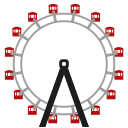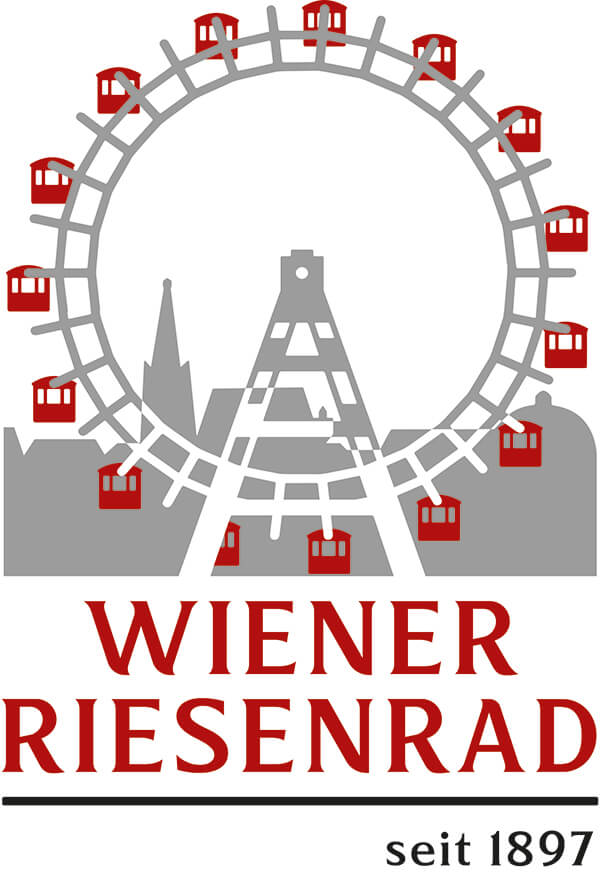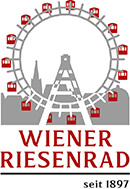Technical Data Vienna Giant Ferris Wheel
number of waggons
15
total height
64,75 m above ground
diameter of the Wheel
60,96 m (= 200 ft)
outer diameter of the Wheel
55,78 m
inner diameter of the Wheel
49,68 m
axis of the Giant Ferris Wheel
10,78 m long, 0.5 m thick, 16.3 t
weight of the Wheel
244,85 t
total weight of all iron structures
430,05 t
turning speed
0,75 m/sec = 2,7 km/h
In 1937 engineer Friedrich Beck, who at this point in time could look back on a career at the Giant Ferris Wheel spanning over almost 40 years, compiled a technical description of the Giant Ferris Wheel which is still valid today.
The city’s authorities initially raised objections to the construction of the Giant Ferris Wheel which was an unusually bold project for the time. Only after Johann Brick, professor for bridge construction at the Technical University of Vienna, had examined the project and submitted his calculations to the municipal planning and building control office did it receive a building permit.
In principle, the Giant Ferris Wheel is set up like a bridge, which in its form consists of two identical semi-circles placed on top of one another. These are suspended from the hub of the large axis by means of 120 flexible spokes, although during rotation only those which are near the vertical plane facing downwards are weight bearing.
The large axis of the Giant Ferris Wheel – 10.9 meters long, 0.5 meters in diameter, 16.3 tons in weight – was supplied by the steel works W. Baerdmore&Co from Glasgow, Scotland. This axis revolves in two open bearings, each of which is mounted where the heads of the 4 pylons come together. This load-bearing construction transfers the weight of the entire wheel together with that of the axis, the spokes and the cabins onto the 8 foundations of the pylons.
Building the Giant Ferris Wheel was no easy task and even transporting the axis posed difficulty.
The wheels of the carriage that transported the axis from the railway station to the building site of the Giant Ferris Wheel and which was drawn by 16 horses sank into the soft ground of the Prater and had to be freed with a special hoisting apparatus before further transport was possible.
Later a track capable of bearing this weight was constructed along the entire route so that the axis could be safely moved. Steam-powered cranes then raised the axis to its final height of 33.5 meters over the inclined plane of two pylons and then embedded it into the two bearings mentioned earlier.
The pylons and the wheel were built without the use of scaffolding. Steam cranes with pivot arms, standing on three wooden towers which rose in height as construction work progressed, hauled the different parts of the iron structure upwards. The wheel was assembled in a self-supporting manner in that first of all a wheel segment was suspended from the hub of the large axis by means of cable spokes. Then a further segment was connected to the left and the right of it and secured to the hubs by the spokes. In this fashion, construction advanced. The wheel therefore supported itself during construction, the more so as the individual segments were connected to the hub of the large axis by the cable spokes.
The outer circumference of the rim is connected to the inside by radial latticework and by two diagonal tension rods. The western rim facing the city is also rigidly connected to the eastern rim facing the Prater at a distance of 6 meters by means of latticework and tension rods. Between said radials, the structure connecting the outer circumference with the inner circumference, a cabin is suspended at each joint between two wheel segments. Each cabin is 5.4 meters long, 2.45 meters wide and 2.65 meters high; they are suspended on a steel axis so that the floor remains in a horizontal position even as the wheel rotates.
So much for Mr. Beck’s account from 1937. The inner spokes which secure the circumference rim to the axis consist of steel wire ropes with a diameter of 10 cm and grommets at the ends. Of the 120 spokes which are mounted at the suspension points of the cabins, 60 are fitted at right angles to the axis, while the remainder are diagonal, in order to provide extra resistance against wind pressure.
The wheel rim consists of steel plates and brackets, whereby the brackets face outward and are connected to the circumference opposite. As a result, the circumference forms a girder to which the inside spokes referred to earlier are attached. The 6.35 meter long outer spokes are riveted to the inner and outer circumference cover plates by latticework.
The outer circumference of the wheel is also made of U-shaped girders, namely two parallel girders which are connected both to each other and to the inner circumference of the wheel rim by flat steel supports. The circumference spokes form the extension of the steel wire rope spokes and consist of riveted beams, which are directly attached to the two concentric wheel rim rings.
The Giant Ferris Wheel is powered by two traction cables which permit the transmission of the necessary torque through friction pads on the outer sides of the wheel rim. The two drive motors work on a single shaft in order to guarantee synchronization of the two traction cables. The further transmission of power to the rope drive is carried out over pulleys and a two-stage transmission.
The slipring motors from 1984 produce 15 kilowatts and rotate at a speed of 720 revolutions per minute.
In 1988 the cogwheels from the post-war years and the complete drive propulsion system were replaced.
In 1997 and 1999 the Giant Ferris Wheel was completely repainted. After extensive sand blasting work, 200 tons of old paint and sand were removed and only 4 tons of new anti-corrosion paint applied as protection against wind and weather for the decades to come.
Even those visitors who are not particularly interested in technical details often ask what would happen in the event of a power cut. We can reassure Giant Ferris Wheel passengers: we have an emergency generator which is permanently monitored and which is able to guarantee standby operations at any time. It also lights up the area in front of the Giant Ferris Wheel. However, if – as is only theoretically possible – that too should fail, the Giant Ferris Wheel can still be operated manually.


